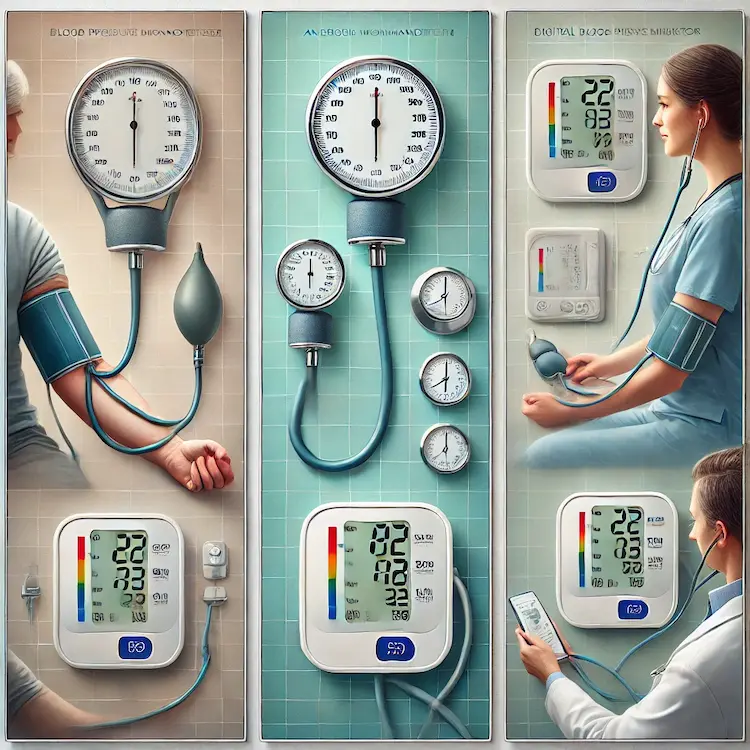High blood pressure (hypertension) is a silent killer that significantly contributes to kidney damage. The kidneys filter waste from the blood, regulate fluid levels, and maintain overall balance in the body. However, persistent high blood pressure puts excess strain on the kidneys, leading to chronic kidney disease (CKD) or even kidney failure.
Monitoring blood pressure is essential for preventing these complications. The sphygmomanometer (Sphyg)—a widely used medical device—plays a crucial role in detecting and managing hypertension. By ensuring accurate blood pressure monitoring, individuals can take timely action to prevent kidney damage.
This article explores the relationship between high blood pressure and kidney health, the role of Sphyg devices, different monitoring techniques, and practical steps to prevent kidney damage.
Understanding the Link Between High Blood Pressure and Kidney Damage
How Hypertension Affects Kidney Function
The kidneys rely on an intricate network of blood vessels to filter waste and excess fluids. When blood pressure is consistently high, these vessels suffer from:
- Narrowing and Hardening of Arteries – Hypertension damages kidney arteries, reducing blood supply.
- Decreased Filtration Ability – Damaged vessels compromise the kidneys’ ability to filter waste.
- Protein Leakage in Urine (Proteinuria) – Increased blood pressure can cause proteins to leak into the urine, an early sign of kidney disease.
- Kidney Scarring (Glomerulosclerosis) – High blood pressure causes scarring in kidney filters (glomeruli), leading to loss of function.

Health and Societal Impact
- Rising Cases of Kidney Disease – The Global Burden of Disease study highlights that CKD is the 12th leading cause of death worldwide.
- Increased Healthcare Costs – Dialysis and kidney transplants are costly; prevention is more affordable.
- Reduced Quality of Life – Hypertension-induced kidney damage leads to fatigue, swelling, and serious complications like heart disease.
The Role of Sphyg in Preventing Kidney Damage
Importance of Regular Blood Pressure Monitoring
Blood pressure fluctuations often go unnoticed. Regular monitoring with a sphygmomanometer allows individuals and healthcare providers to:
- Detect hypertension early.
- Track trends and assess medication effectiveness.
- Adjust lifestyle habits before permanent damage occurs.
Types of Sphygmomanometers and Their Accuracy
There are three primary types of sphygmomanometers:
| Type |
Mechanism |
Accuracy Level |
Best Use Case |
| Mercury Sphygmomanometer |
Uses mercury column for precise measurement |
Highly accurate (gold standard) |
Clinical settings |
| Aneroid Sphygmomanometer |
Uses a dial and mechanical spring system |
Moderate accuracy (requires calibration) |
Home & professional use |
| Digital Sphygmomanometer |
Electronic with automatic inflation and digital display |
Convenient, slightly less precise |
Home monitoring & telehealth |
Among these, mercury sphygmomanometers are considered the most accurate but are gradually being replaced due to environmental concerns.
Sphyg vs. Wearable Blood Pressure Monitors
Modern technology has introduced wearable BP monitors (e.g., smartwatches), but their reliability varies. Comparing the two:
| Feature |
Sphygmomanometer |
Wearable BP Monitors |
| Accuracy |
High |
Moderate |
| Convenience |
Requires setup |
Wearable, continuous monitoring |
| Clinical Validation |
Yes |
Limited studies support accuracy |
| Cost |
Affordable |
Expensive |
Although wearables offer convenience, sphygmomanometers remain the gold standard for accurate blood pressure monitoring, which is critical for kidney health.
Practical Steps to Prevent Kidney Damage from Hypertension
Regular Blood Pressure Monitoring
- Check blood pressure at least twice a day if hypertensive.
- Use a validated digital sphygmomanometer at home.
- Keep a BP log to track patterns and share with your doctor.
Dietary Changes
- Reduce salt intake – High sodium increases BP and kidney strain.
- Increase potassium-rich foods – Bananas, spinach, and oranges help balance sodium levels.
- Limit processed foods – These often contain hidden salts and unhealthy fats.
Exercise and Weight Management
- Aim for 150 minutes of moderate exercise per week.
- Maintain a healthy BMI – Excess weight increases blood pressure.
Medication and Medical Supervision
- Follow doctor-prescribed antihypertensive medication.
- Get routine kidney function tests (creatinine and GFR tests).
Stay Hydrated and Manage Stress
- Drink at least 2 liters of water daily.
- Practice stress-reducing techniques (e.g., meditation, yoga).

Conclusion
Kidney damage from high blood pressure is preventable with early intervention and consistent monitoring. Sphygmomanometers play a crucial role in tracking hypertension, allowing individuals to take necessary steps before irreversible damage occurs. Choosing the right blood pressure monitor, adopting a kidney-friendly lifestyle, and consulting a healthcare provider regularly can significantly reduce the risk of kidney disease.
Key Takeaways
- High blood pressure is a major cause of kidney disease due to blood vessel damage.
- Regular BP monitoring with a sphygmomanometer is essential for early detection.
- Mercury sphygmomanometers offer the highest accuracy, but digital ones are more convenient.
- Dietary changes, exercise, and stress management help control hypertension.
- Medical supervision and proper medication are key to long-term kidney health.
Actionable Recommendations
- Invest in a clinically validated sphygmomanometer for home use.
- Check blood pressure at consistent times daily for reliable readings.
- Follow a low-sodium, high-potassium diet to maintain kidney health.
- Incorporate regular exercise and manage stress effectively.
- Visit a doctor regularly for blood pressure and kidney function check-ups.

